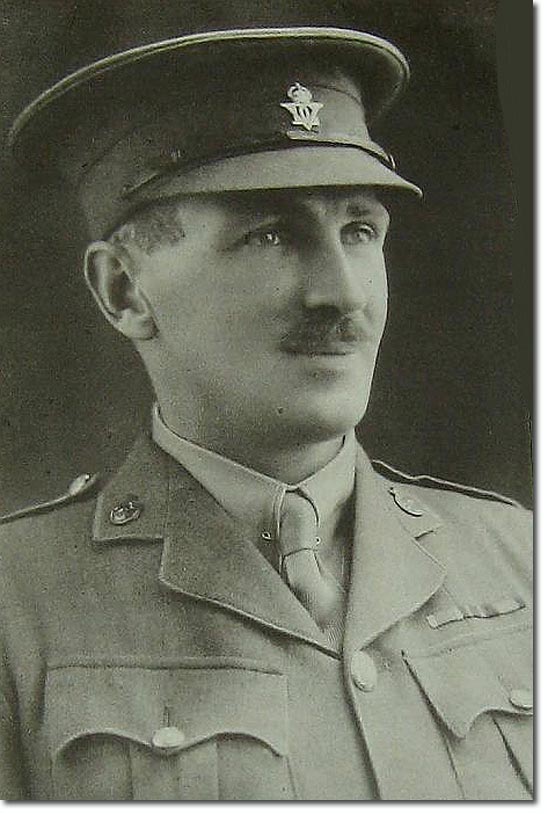|
|

 |
|
William Digby Oswald was the youngest son of Thomas Oswald, and the only son of Wilhelmina Catherine his wife, formerly of Southampton, and afterwards of Castle Hall, Milford Haven, and of Blackheath. He entered the Rugby School in 1895, and in 1898 he won the Wrigley cup for his House by his own unaided efforts, winning the Quarter-Mile, High Jump, Weight and Hurdles. He left the same year, entering the Army in 1899 through the Militia, and was gazetted to the 2nd Battalion The Leicestershire Regiment and saw service in Egypt. He served in the South African War as Lieutenant and Adjutant of the Railway Pioneer Regiment, was mentioned in Lord Kitchener's Despatches and awarded the DSO. He then began mining in South Africa. He served also, as Captain and Adjutant of Royston's Horse, in the Natal Rebellion in 1906, and was wounded in fierce bush fighting in Zululand. He married on the 7th of March 1905 at St John's Church, Weymouth in Dorset to Catherine Mary Yardley (nee Scott) and they had three daughters, Theodora Betty, Ambrosine Mary, and Patricia Catherine Digby who was born in 1914.
He continued mining in Rhodesia until May, 1914, and lived at Bulawayo. On the outbreak of the War he joined the 5th Dragoon Guards as a lieutenant on August 7th, 1914, and on August 14th went out to France with the First Cavalry Brigade. He served with them through all the fighting and retreat from Mons, and in the Battles of the Marne and of the Aisne. He was wounded at Messines on October 31st, 1914, and sent home to recuperate. In May, 1915, eager to get to the Front again, he was attached as Captain to the RA., and was with the 3rd Division in the heavy fighting round Ypres. After serving on the Staff as ADC. to Major-General Haldane, and as Assistant Provost-Marshal, he was in December, 1915, appointed Second in Command of the 12th Battalion The West Yorkshire Regiment, and in March 1916, took over the Command. He took part in much fighting at St Eloi, and in the early stages of the Battle of the Somme. His appointment as Lieutenant-Colonel was gazetted, after his death, in October. On July 14th, 1916, the 3rd Division was ordered to capture a long ridge between Bazentin Le Petit and Longueval. The assault delivered at 3.25 am, was highly successful but in the evening Major Oswald, after returning from the front line, went on to some high ground to see the cavalry go through, and was struck in the chest by a piece of shell. He seemed to be going on well until the morning of July 16th when he sank rapidly and died, age 36. He was buried at Dives Cops, near Bray. Major General Haldane, commanding the 3rd Division, wrote to Catherine Oswald in a letter dated the 16th of July 1916: "He was my aide de camp for a time, and latterly was given the command of 12th Battalion West Yorkshire Regiment. He improved the battalion enormously, and, though one of the New Army battalions, I felt that it was one of my best. He was a lion hearted man-a brave man among the many brave men in the Division, and none could be braver in action than he. His loss I feel much personally, but still more as Commanding Officer, for a man like him was worth a battalion of infantry. I regret that it was impossible for me to see him after he was wounded, but my A.D.C., who was devoted to him, saw him in hospital, and was at the grave. I believe he realised that his wound was a mortal one. He led his battalion with his usual gallantry on the 14th, and they did splendidly. I valued him so highly I cannot let another day pass without writing to you." |
Armed Forces | Art and Culture | Articles | Biographies | Colonies | Discussion | Glossary | Home | Library | Links | Map Room | Sources and Media | Science and Technology | Search | Student Zone | Timelines | TV & Film | Wargames
